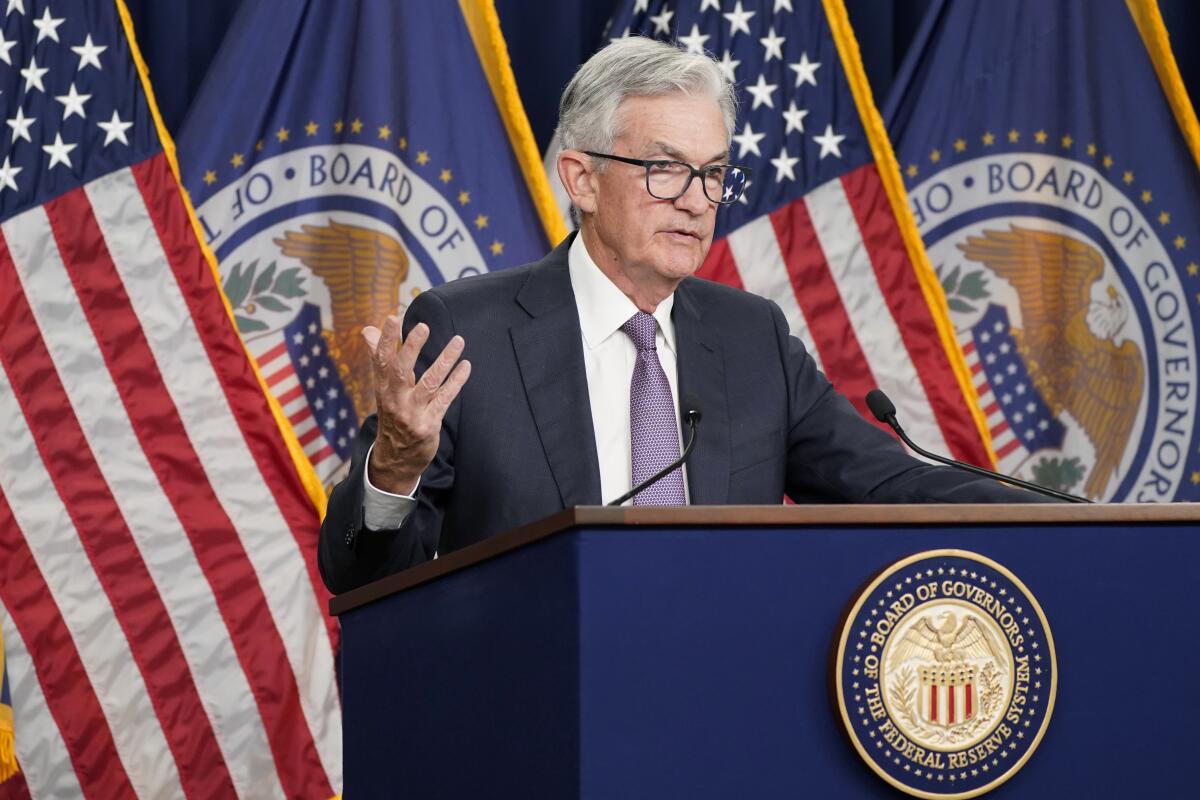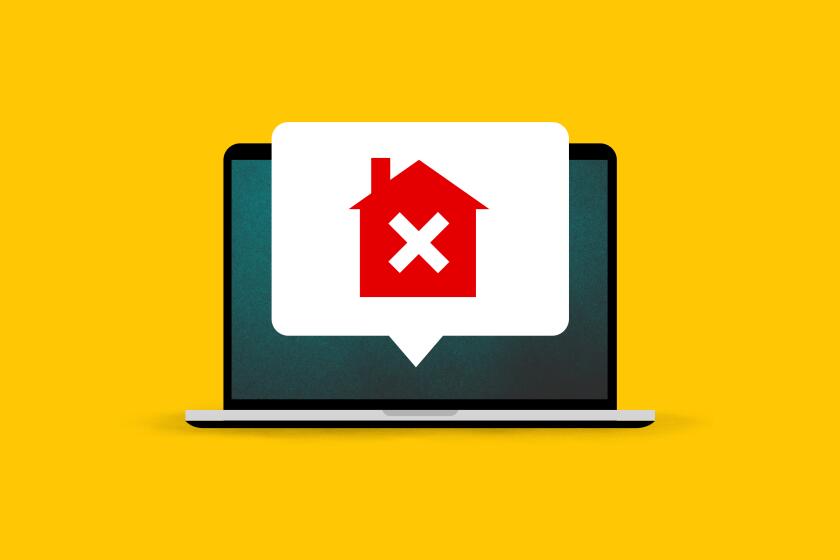Key issue as Fed meets this week: When to slow rate hikes?

- Share via
The Federal Reserve may reach a turning point this week as it announces what’s expected to be another substantial three-quarter-point increase in its key interest rate — its fourth straight.
Fed officials will probably engage in a fraught debate over whether it may soon be time to slow the rate hikes, which are intended to cool the worst inflation in four decades but are also raising the risk of a recession.
At a news conference Wednesday after the Fed’s meeting, Chair Jerome H. Powell could signal a forthcoming shift to smaller rate increases. Doing so would give officials time to assess the effect of the hikes.
Powell probably won’t explicitly spell out the Fed’s likely next moves. But economists say he could acknowledge that officials are discussing a downshift to a half-point rate increase in December. The Fed’s hikes have already led to much costlier borrowing rates for home, auto and business loans.
Those higher loan costs have weakened the home market, in particular. The average rate on a 30-year fixed-rate mortgage, which was just 3.14% a year ago, topped 7% last week for the first time since 2002, mortgage buyer Freddie Mac reported. Nationwide, sales of existing homes have fallen for eight straight months.
Fed officials have emphasized that they need to raise rates significantly to tame inflation, which has caused hardships for millions of households. High inflation has also become a central point of attack for Republicans against Democrats in the midterm congressional elections.
For Republicans, the inflation issue is an election boon. But why don’t they propose any ideas for doing something about it?
Yet some economists have said the Fed should soon consider scaling back the fastest pace of rate increases since the early 1980s.
“It is time to think about calibrating these rate hikes,” said Diane Swonk, chief economist at KPMG. As the Fed moves closer to finishing its rate increases, she said, “it makes sense to not be hitting the brakes so hard.”
The Fed’s benchmark short-term rate stands in a range of 3% to 3.25%. In September, policymakers forecast that they would raise it by an additional 1.25 percentage points by year’s end. That timetable suggests increases of three-quarters of a point Wednesday and half a point in December.
One concern for the Fed is that if it suggests it could ease its credit tightening, the financial markets might conclude that it will soon stop raising rates and perhaps cut them next year. Stock and bond prices would move higher, countering the Fed’s efforts to slow the economy.
Fed watchers say there are two ways the central bank could avoid raising any misplaced optimism: Officials could send a tough anti-inflation message Wednesday by reiterating a point from the minutes of their September meeting. The minutes showed that the policymakers preferred to err on the side of raising rates too high, rather than raising them too little and risk perpetuating high inflation.
Another possibility is that in December, when policymakers will update their economic forecasts, they could pencil in an extra quarter-point rate increase early next year to underscore their determination to curb inflation, which reached a punishing 8.2% in September.
As recession winds blow and job cuts increase, employers report that they may first look at employees who work from home.
One reason the Fed might begin pulling back soon is that some early signs suggest that inflation could start declining in 2023. Consumers, squeezed by high prices and costlier loans, are starting to spend less. Supply chain snarls are easing — ocean freight costs have plunged 67% in the last year — which means fewer shortages. Wage growth is plateauing, which, if followed by declines, would reduce inflationary pressures.
For now, though, many Fed officials have said they see few signs inflation is coming down in a sustainable way.
“We need to see actual progress in core inflation and services inflation, and we are not seeing it yet,” Neel Kashkari, president of the Federal Reserve Bank of Minneapolis, said recently. (Core inflation excludes volatile food and energy costs and is considered a good reflection of underlying price pressures.)
A few have sounded more optimistic notes. Fed Vice Chair Lael Brainard listed several reasons inflation would probably fall soon, including price cuts by retailers to clear excess inventories. As a result, she said, “moving forward deliberately” would help the Fed determine how the economy is handling its rate increases and how many more might be needed.
And Mary Daly, president of the San Francisco Fed, noted recently that the central bank won’t be carrying out three-quarter-point rate increases indefinitely.
“The time is now to start talking about stepping down,” Daly said.
Your high-yield savings account may not be keeping up with rising interest rates. A little vigilance can help you squeeze out a much better return.
Most of the signs of easing inflation have emerged in private-sector data sources, including websites that track rents and home prices. Some economists think Fed officials will have to assign greater weight to such sources in the coming months.
The data firm ApartmentList, for example, said rents in new leases fell from August to September for the first time this year. And tracked over the last 12 months, the still-high 6.8% increase in rents was far less than the 12-month increase of 17.1% that was measured a year ago.
Yet in the government’s consumer price index, housing costs are still rising at the fastest pace in decades. That reflects what many people are experiencing: Apartment dwellers who are now renewing leases probably face higher rents than they did a year ago.
The slowdown in housing costs will eventually feed into the government’s data, though it could take a year or longer. Many economists think the Fed will have to take those slowing housing costs into account before then.
Kathy Bostjancic, chief U.S. economist at Nationwide, said that as interest rates reach levels that slow growth, and as real-time data show slowdowns in rents and wages, Fed officials “need to be looking through the front windshield, not the back, and be more careful with their rate increases.”
A stolen wallet precipitates a reporter’s years-long fight against identity thieves — and a system that doesn’t care and won’t help.
Other central banks have already started pulling back. The Bank of Canada raised rates by only a half-point last week even though a three-quarter-point hike was expected. The European Central Bank raised its key rate by 0.75 percentage point but signaled that its increases could cool.
These moves “contributed to expectations that a dovish pivot is coming for all global central banks,” TD Ameritrade economists said.
More to Read
Inside the business of entertainment
The Wide Shot brings you news, analysis and insights on everything from streaming wars to production — and what it all means for the future.
You may occasionally receive promotional content from the Los Angeles Times.














